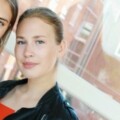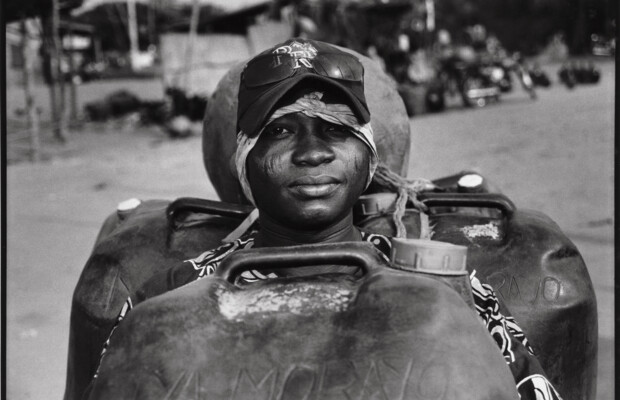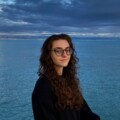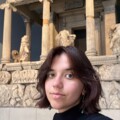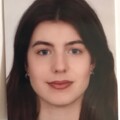Upcoming London gallerist Louis Chapple discusses art, ambience and art fair evolution
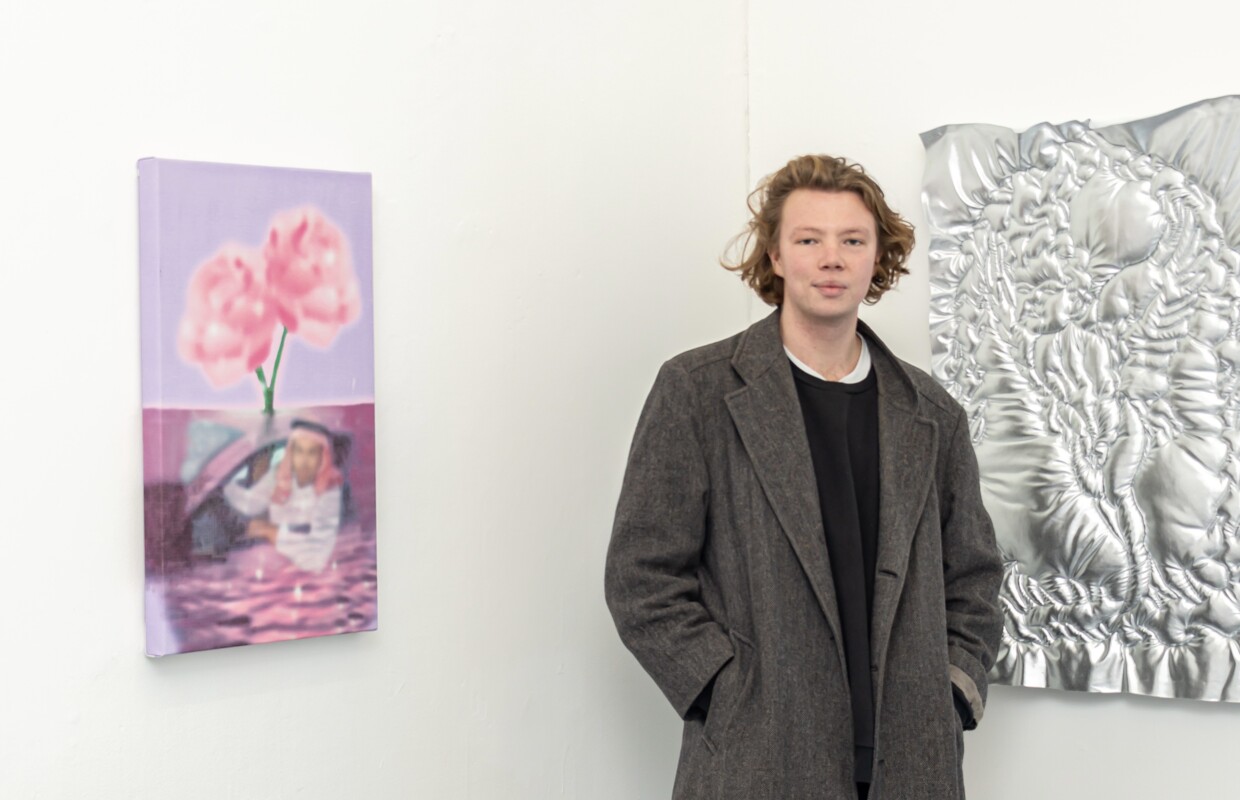
Studio/Chapple gallery and project space opened in Deptford, London, in November 2022. It was founded by Louis Chapple, who has been curating the gallery’s programme with a focus on the intersection between sonic and visual art. This creates a unique and captivating environment characterized by vibrancy and frequent references to club culture. The show openings are always spirited and energetic, filled with a young, dynamic crowd enjoying the exhibition alongside DJ gigs and performances. During the recent Frieze week, Studio/Chapple participated in an alternative 'non-fair' project, Cornershop by Minor Attractions, marking a milestone in the gallery's growth.
I met with Louis at the gallery, which is open to the public on Fridays and Saturdays. He introduced me to the current show, 'the body, dissolving', featuring Isabelle Pead’s sound installation and a greenhouse (yes, a literal greenhouse!) inside the space, as well as ceramic works by Solanne Bernard. We stood outside, where, as Louis calmly smoked a cigarette or two, we discussed his impressions of the gallery’s journey, his recent experience participating in a first fair, or rather 'non-fair', and the current state of art fair industry.
E: Studio/Chapple physical gallery opened a year ago and showed over fifteen emerging artists combining different media such as sound, performance and painting. Could you share your thoughts on its journey so far - how do you feel about the progress you've made? Were your expectations fulfilled? Could you reflect on the achievements and challenges?
L: It’s funny you mention fifteen artists – I hadn't really seen it that way since I’ve only done one solo show in nearly a year period. This past year has been mad. I jumped into my MA in Curating Contemporary Art around the same time I opened the gallery. Being at RCA (Royal College of Art) influenced the early days of my gallery's programming because I was deep into the curator role there, which got me excited about choosing artists, setting the vibe, and shaping the narrative.
The way things have unfolded at the gallery wasn't what I expected, but in the best possible way. It’s been a very humbling experience to see that people are willing to travel across London to come to Deptford, not only for the opening nights but also to see the shows. The support from other galleries – the neighbouring ones (there’s about seven of us) and the wider London gallery network, people who've been there and done that, has been very welcoming and helpful.
Having a permanent spot makes people see you differently. It's like, "Alright, they're serious about this", and people change their tune slightly.
I’ve been surprised at how quickly everything has taken off and it’s gone from strength to strength with each show.
E: What suggestions would you give to someone who is thinking of opening a gallery considering the current dynamics?
L: I can’t speak about the experience outside of London as it might be easier in other areas price-wise, and I hate to sound boring about it, but be ready for hidden costs. Don’t jump fully into it right away. It takes time for a new gallery to build a collector base and generate sales, so it's important to have a balance where part of the income is coming from elsewhere.
Be prepared to let it consume your life and your money. I’d say only go into it if you are ready to fully immerse yourself.
I’ve been lucky to be part of this enclave here in Deptford that offers very affordable rent. It makes it possible for me to have a more experimental programme, though I am not financially reliant on making a living through the gallery and am involved in other projects.
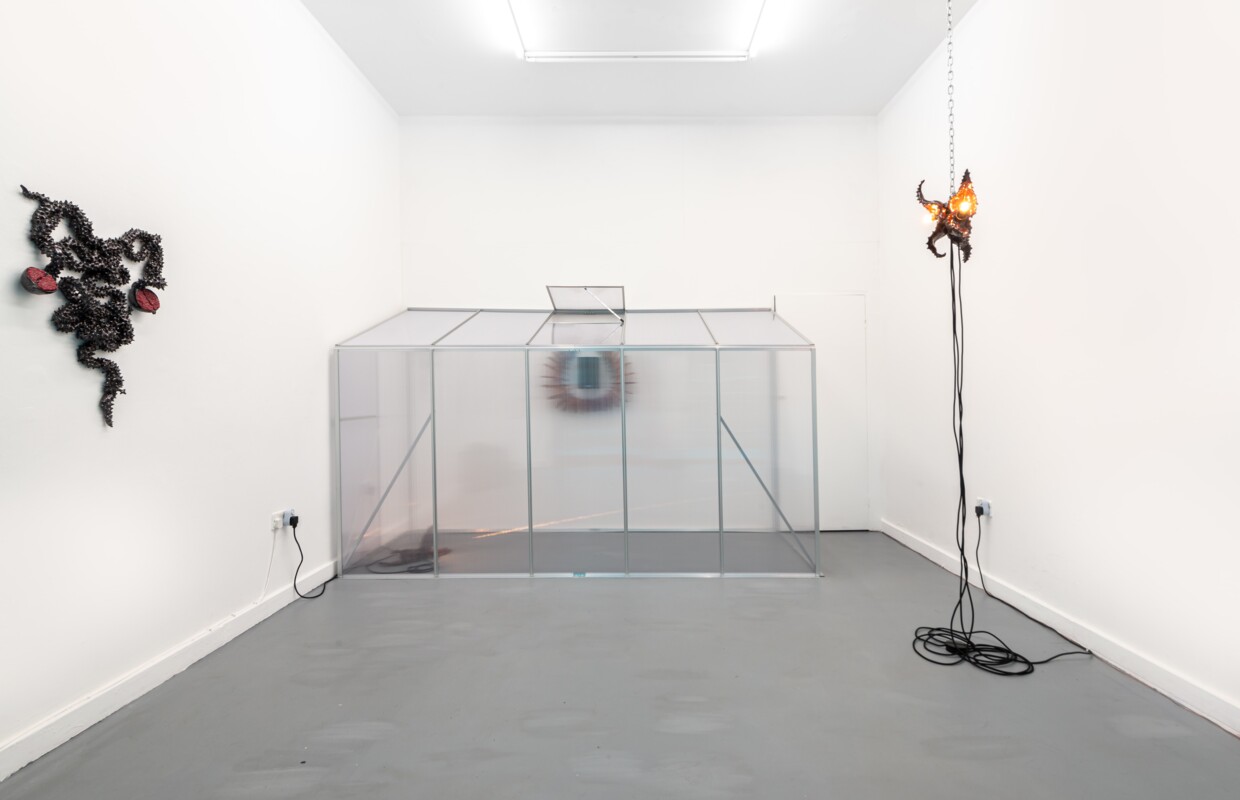
E: You have adopted a model of shared space and stress the importance of affiliation with and mindfulness about a local community. It is now embraced not only by galleries but also by art fairs like Minor Attractions, where you participated recently during the Frieze week. Why do you think that is the case?
L: I think there are a good few reasons. In the case of Minor Attractions, it was about including a fundamental part of the art ecosystem here: young and emerging galleries.
I see it as a reaction to the significant void during Frieze week, coupled with a desire to bring back an element of fun. It aimed to change the way people experience art at a fair.
They can come, listen to music, have a drink, chat, and still purchase work without being funnelled into an overwhelmingly conservative, elitist, and banal environment that's about selling art over a week. Fairs like Frieze and Art Basel are essential components of the ecosystem. And, let's be honest, without them, Minor Attractions wouldn’t have occurred. You need these huge behemoth entities to draw crowds, and from that stems the urge and necessity to address the gaps these larger institutions overlook.
E: Could you share your experience from participating in Minor Attractions?
L: It was great! Honestly, I didn’t have any expectations because I didn’t really know what it was going to be like until it happened. I think that was the case for all the galleries. It very much depended on the trust we placed in Jonny and Jacob (Jonny Tana and Jacob Barnes, the organizers), and knowing they would deliver a good show. I also greatly appreciated the sense of gallery community, which can sometimes be overlooked. For instance, I currently work for Niru Ratman gallery, and they ended up being right next to my booth.
For me, as an emerging space, it was very important to be on a platform that drew significant press and public attention. Nobody really visits Deptford during Frieze week, and it's understandable given the myriad of events taking place. So, I definitely got everything I had hoped for.

E: The use of space at events like Minor Attractions differs from the booth-based fair approach. How would you evaluate the exhibition experience within this alternative space model?
L: It had its benefits and its pushbacks. There was a very specific lean towards not having a booth structure. Instead, the aim was to group each gallery’s artists together to create a unified feel. Booths often create an underlying sense of competition, as if everyone is out for themselves, trying to put out the best thing. In contrast, Minor Attractions was curated to promote a sense of unity between the galleries.
The drawback of this ‘boothless’ format was that gallerists couldn't always be by their works and talk about them with visitors. However, that wasn’t the atmosphere organizers wanted to create, and I think in terms of vibe that paid off really well.
E: Fairs, or rather non-fairs, like NADA, Basel Social Club and Minor Attractions share a lot in common - the focus on emerging exhibitors, relaxed atmosphere, free access, switch of the focus from sales to discussions and networking-focused interactions. They are perceived as a refreshing alternative during the typically hectic fair weeks. Twenty years ago, Frieze was also a new and exciting platform for creativity. Do you believe these events can maintain their non-elitist and open atmosphere, or is it inevitable that they will follow in the footsteps of Frieze as they gain popularity?
L: I think every intention was set to make sure that moving forward such outcome wouldn't happen, but it remains to be seen. As a gallery evolves, it's only natural to think about participating in major fairs. However, my hope is that initiatives like these will continue to present an alternative. For instance, Cøpperfield gallery participated in both Minor Attractions and Frieze. This suggests that galleries are drawn to this specific event because of its unique atmosphere, and I would hope that such a mindset persists over the years.
E: Do you envision the possibility of this new fair model potentially replacing the conventional one?
L: A "NO" would be my simple answer. Nor should they! Both are equally important, and the non-conventional fairs couldn’t operate without the traditional ones by definition. If someone offered me a booth at Frieze Focus, I'd take it!
The global dominance of brands like Art Basel and Frieze will not be overtaken by a non-conventional fair model any time soon.
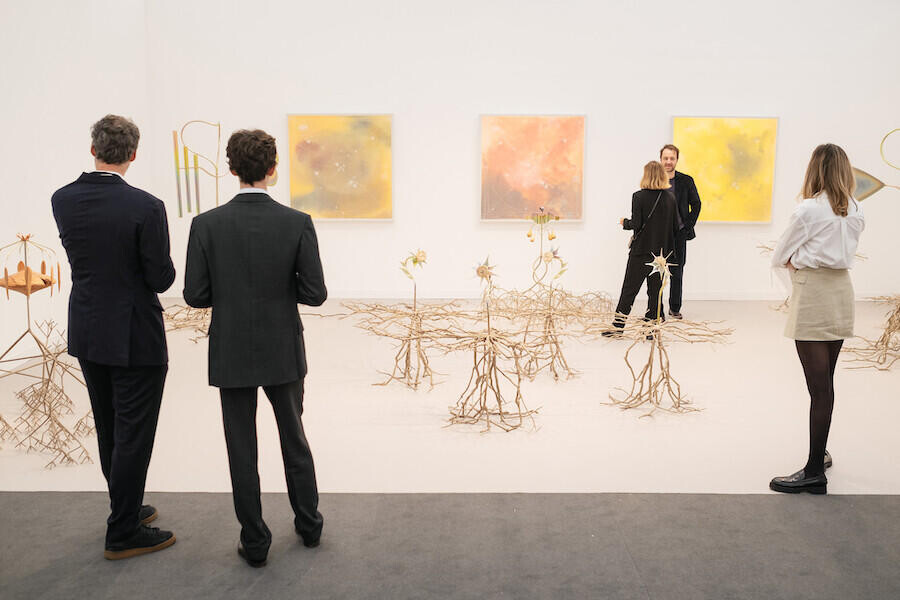
E: You have participated in art fairs not only as a gallery but also as part of the organising team for fairs like The Other Art Fair and START. Could you outline the recipe for a successful fair, both for exhibitors and visitors?
L: I believe the best that organizers can do for exhibitors is to support them within the realms of reason and possibility. Everyone is under stress and time constraints during fair preparations. I've seen minor issues escalate into major problems due to poor communication between the fair staff and exhibitors. So, good communication is essential for organizers to keep the situation under control and ensure a smooth experience for exhibitors.
Speaking of visitors, I’ve never viewed fairs as merely places to see art. In a city like London, with its saturated art scene and numerous incredible exhibitions that are free of charge, I don’t think people pay an extortionate ticket price to come to a fair just to see art. Bluntly put, works at fairs are displayed in the best way for selling, and organisers focus on collectors, not the general public. This might sound harsh, but it's my honest opinion. I think it would be different in cities with a smaller ecosystem of contemporary art.
E: In fact, in our recent interview Attila Ledényi, the director of Art Market Budapest, highlighted the richness and diversity of the fair’s programme catering to different audiences.
L: Yes, absolutely! Fairs in cities with smaller art markets are crucial in planting seeds for the development of this sector. So, it makes sense their programmes are designed for different kinds of public. And you know, Frieze also has a public programme and for me it seems like a pretense. I think they do it because they feel obliged. Although, the Frieze Sculpture is great public initiative! It’s free, outdoors and you don’t have to necessarily know what Frieze is.

I think it would be interesting to see how a ‘non-traditional’ fair model could benefit cities and countries that do not have such saturated art ecosystem and giant fairs like London, Paris and New York. Perhaps, it could breed a more organically grown and more critical art scene from the bottom up.
E: Are there any specific fairs you aspire to participate in the future?
L: I don’t have a set agenda, but I'm keen on doing Liste in Basel, even though it’s notably tough to get into. I’d be very interested in participating in ART-O-RAMA in Marseille. It seems interesting, and I love the idea of spending a week in Marseille. I'd also consider independent fairs like NADA. I'm open to opportunities, but I wouldn’t just participate in a fair to check a box; it needs to align with the gallery's vibe and my programme. I’d be excited to see more fairs emerge in locations outside the traditional art market hubs, perhaps in South East Asia or Latin America. Maybe I'll delve deeper into this next year, but for now, my focus is on the gallery.
E: What lies ahead for Studio/Chapple?
L: You touched on the mix of sound and visuals – and, coming from a music background, that will always be important to me.
Looking ahead, I will continue leading a gallery programme from a position which is not normally inhabited by a gallery director – curating the atmosphere from both a sonic and live perspective, even if the show is static, by combining music and contemporary art.
I’m shifting now towards more solo and duo shows because I like when every corner, every bit of the floor, is thought about. This allows visitors to feel the entire space and its environment while seeing an exhibition. It's harder to achieve this with group shows, where sometimes works can become just objects in a space.
Very exciting shows are coming up from the beginning of next year! We will showcase works by Bill Daggs, a multidisciplinary artist who often works with sound, and then Maria Joranko, a Goldsmith graduate. I have this extensive list of artists with whom I really want to work and create some incredible spaces. I am also considering print editions of paintings, proceeds from which will support more experimental practices at the gallery. I must say that my programmes are not set in stone, and I am open to changes in formats, but there’s certainly no sitting around with questions like "What are we going to do now?". So, more shows, club nights, gigs and cassettes are on the cards for next year.
Share the post:
